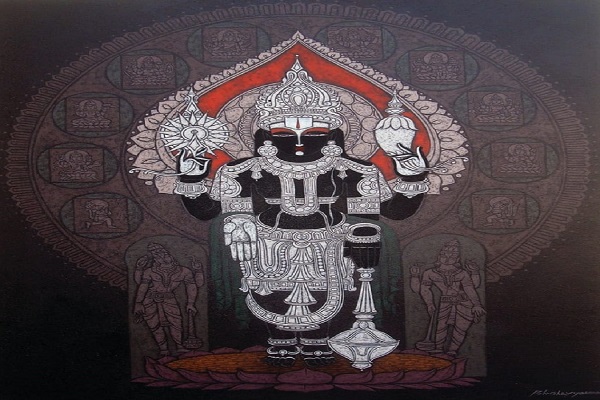Art, spanning its various forms, has stood as a fundamental pillar of human expression for countless millennia. From the ancient cave paintings of bygone eras to the exquisitely crafted tapestries and sculptures of classical antiquity, art has played a central role in documenting our species’ history, culture, and the full spectrum of our emotional experiences. In this journey of discovery, we set forth on an expedition to reveal the enduring beauty of traditional art and unravel its progression throughout the annals of history.
The Origins of Traditional Art
Traditional art, in its essence, comprises a diverse array of art forms that have been honed over generations, frequently transmitted from mentor to disciple. These artistic traditions have firmly taken root in cultural heritage and have stood the test of time. Exploring its origins is imperative to fathom the world of traditional art genuinely.
The dawn of traditional art dates back tens of thousands of years, when our forebears left their indelible marks on cave walls, telling stories of their lives and experiences. These remarkable cave paintings, discovered in places like Lascaux, France, and Altamira, Spain, offer us a captivating glimpse into the world of early humans. They created vivid depictions of animals, hunting scenes, and rituals with crude tools and natural pigments. These primitive artworks served as a means of communication and a way to honor the world around them.
The Influence of Cultures
As human civilization advanced, so did the art forms. Each culture developed its unique traditional art, reflecting its values, beliefs, and way of life. Traditional art, ranging from the grand pyramids of Egypt to the refined pottery of ancient Greece, emerged as a profound embodiment of cultural identity.
In China, the art of calligraphy became an integral part of the culture, with its elegant brushstrokes and intricate characters. Calligraphy was not just a form of writing but a way to convey emotions, wisdom, and spirituality. The traditional Chinese ink paintings, known for their minimalist yet profound beauty, evolved alongside calligraphy and still captivate art enthusiasts worldwide.
Indian traditional art, deeply rooted in spirituality and mythology, gave birth to the vibrant and intricate world of miniature painting. These tiny masterpieces depicted scenes from Hindu epics like the Ramayana and Mahabharata, adorned with rich colors and fine details. Each painting told a story, and royalty often commissioned the artists to create these exquisite works.
With its mosaic art, the Middle East revealed a unique blend of geometric patterns and intricate tilework. Islamic art, in particular, emphasizes the beauty of symmetry and complexity, often seen in the architecture of mosques and palaces. These mesmerizing mosaics carried a deeper meaning, reflecting the harmony of the universe.
In the heart of Africa, traditional art took the form of intricate wooden carvings, tribal masks, and colorful beadwork. These artworks were not merely decorative; they played a vital role in ceremonies, rituals, and storytelling. African traditional art celebrates the connection between humanity and the spirit world.
The Renaissance and Beyond
The Renaissance was a pivotal moment in the art world, signifying a profound shift in its course. This era epitomized rebirth, ingenuity, and a rekindled appreciation for the art of ancient civilizations. Visionaries like Leonardo da Vinci, Michelangelo, and Raphael were driven to infuse fresh vitality into established artistic conventions. Their magnum opuses, like the Mona Lisa and the ceiling of the Sistine Chapel, continue to serve as enduring symbols of the art’s capacity to progress while retaining its eternal allure.
The Renaissance also saw the advent of oil painting, a technique that revolutionized art. The use of oil paints allowed for more vivid colors, intricate details, and a smoother transition between light and shadow. Artists could now create lifelike portraits and breathtaking landscapes with unprecedented realism.
The Age of Exploration and Colonialism
As explorers embarked on journeys far from their native lands, they immersed themselves in unfamiliar cultures and artistic expressions. This era of Exploration and Colonialism facilitated a vibrant exchange of ideas and artistic methods, resulting in the harmonious blending of traditional art from diverse corners of the globe. This cultural exchange enriched traditional art, bringing in new influences and perspectives.
For instance, the European and American encounters introduced indigenous art to a broader audience. Native American pottery, Navajo weavings, and Aztec codices intrigued European collectors. In return, European art incorporated elements from these discoveries, creating a vibrant exchange of artistic traditions.
The Legacy of Traditional Art
Traditional art continues to thrive today, although it faces challenges in an increasingly digital world. Many traditional art forms are endangered as younger generations pursue more modern pursuits. However, there is a renewed interest in preserving and revitalizing traditional art, recognizing its cultural significance and timelessness.
One remarkable example of this preservation effort is the Japanese art of Bonsai. Bonsai, which involves cultivating miniature trees, reflects the deep connection between humans and nature. This traditional art form has found enthusiasts worldwide who dedicate their lives to the meticulous care of these miniature masterpieces.
The intricate craft of Persian carpet weaving has also endured for centuries. These handwoven carpets are renowned for their exquisite designs and vibrant colors. Each carpet tells a story, with patterns and motifs that vary by region, culture, and tradition.
Traditional art forms like Madhubani painting and Pattachitra in India continue to captivate art lovers. These intricate and colorful paintings, typically created on cloth or paper, depict scenes from mythology, nature, and daily life. Through these traditional art forms, the rich cultural heritage of India lives on.
The Future of Traditional Art
As we step into the future, the fate of traditional art rests in the hands of artists, collectors, and enthusiasts. The digital age presents challenges and opportunities for preserving and evolving traditional art.
Technology empowers artists to reach a global audience, enabling them to share their creations with people from diverse cultural backgrounds. Social networking sites, digital art galleries, and online commerce have made it easier for traditional artists to showcase and promote their work. This online presence has rejuvenated traditional art, drawing the interest of a younger generation of art enthusiasts.
Furthermore, institutions and organizations are taking steps to ensure the survival of traditional art. Museums, universities, and cultural centers are actively involved in documenting, researching, and teaching traditional art forms. These efforts aim to pass on the knowledge and techniques to the next generation, preserving the essence of tradition.
Conclusion
Traditional art is a timeless treasure that connects us to our cultural roots and history. It has evolved over millennia, influenced by diverse cultures and artistic innovations. Its enduring beauty lies in its ability to adapt while preserving the essence of tradition. As we gaze toward the future, let us wholeheartedly embrace the profound beauty of traditional art and collaborate to safeguard its heritage for future generations, who will undoubtedly hold it dear and admire it. It is a voyage through the annals of history, one that surpasses the boundaries of time, extending a heartfelt invitation for us to recognize and savor the boundless wealth of human creativity and expression.







